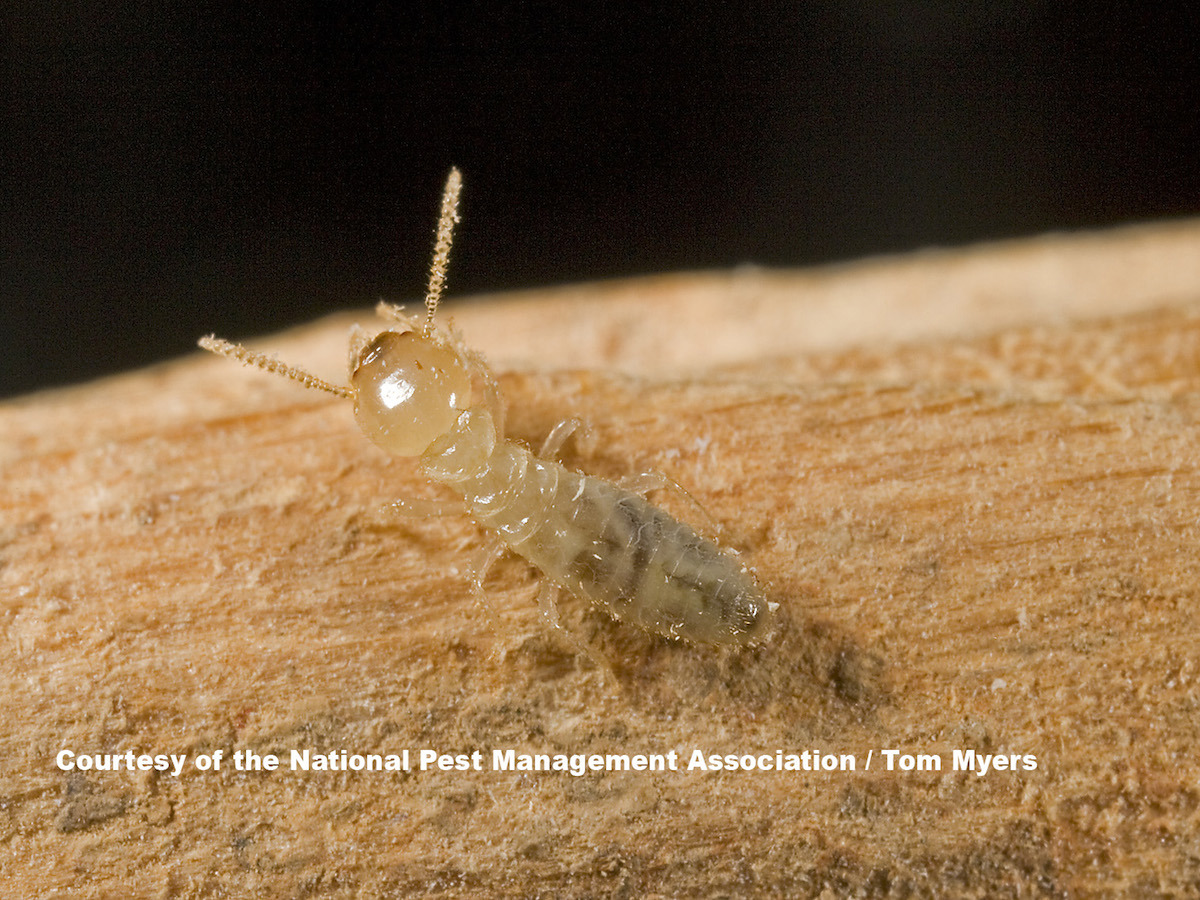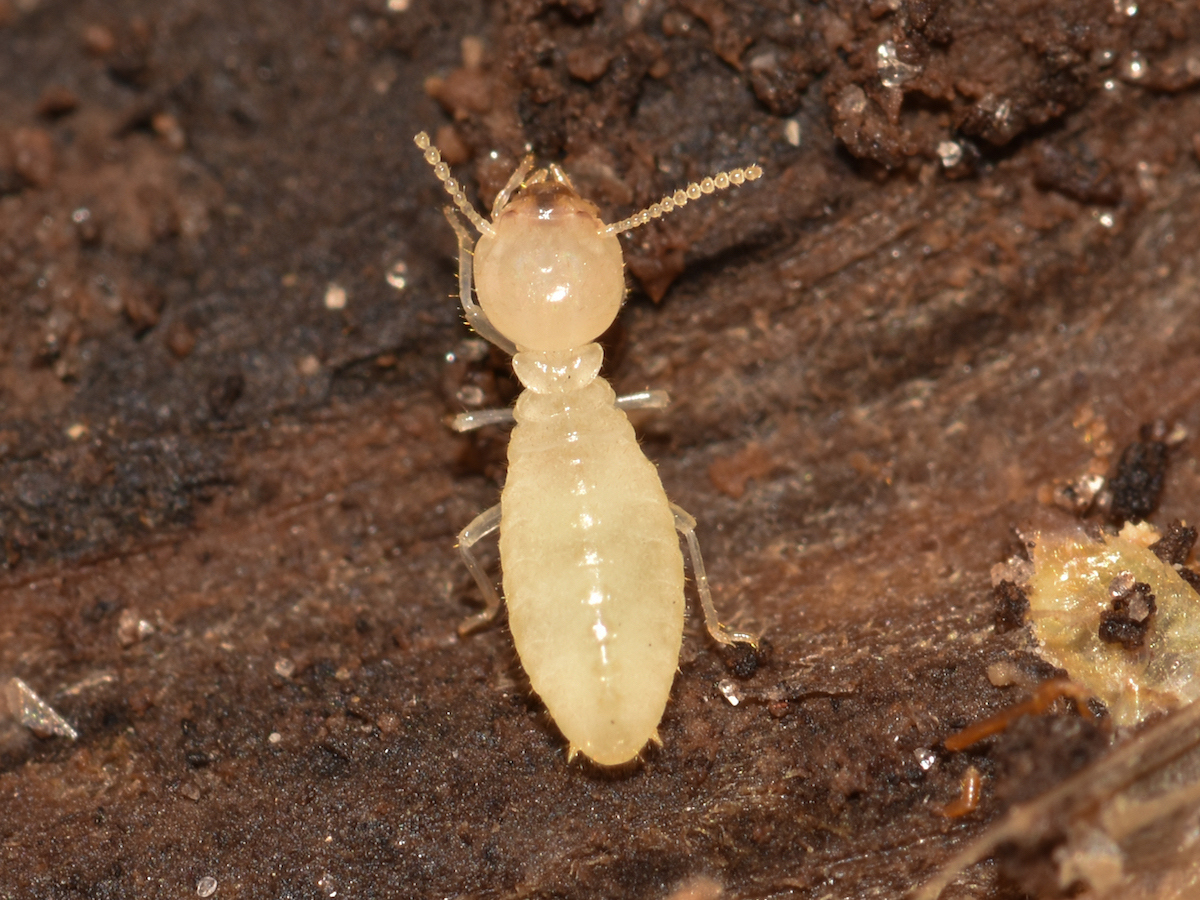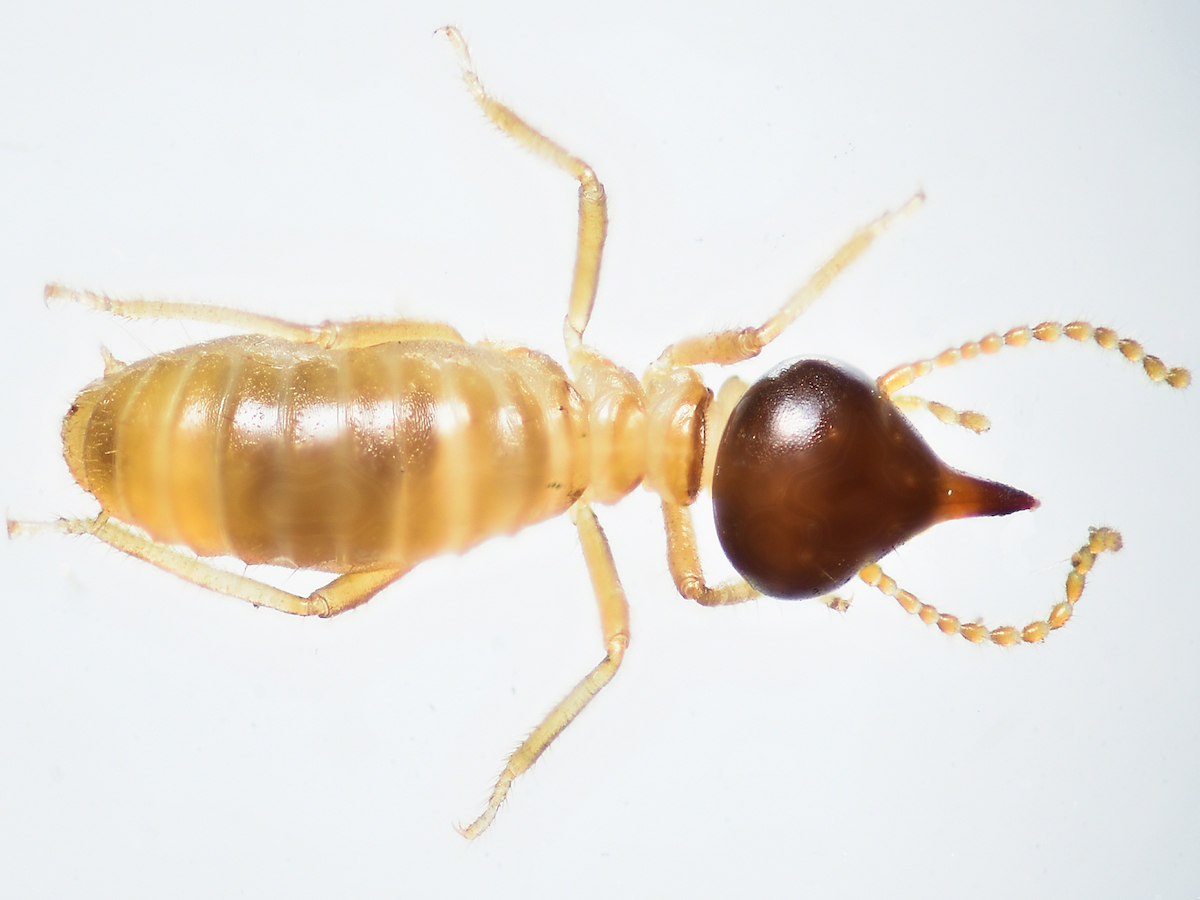Subterranean Termites Family Rhinotermitidae

Subterranean Termite Identification
Color: Creamy white to dark brown/black
Size: 1/8 inch long
Legs: 6
Antennae: Yes
Shape: Long, narrow and oval
Region: Found throughout the U.S.
What are subterranean termites?
Subterranean termites can cause the most damage of any termite species. These termites build distinctive tunnels, often referred to as “mud tubes,” to reach food sources and protect themselves from open air. They eat wood 24 hours a day, seven days a week, using their saw-toothed jaws to bite off small fragments of wood one piece at a time. Over time, subterranean termites can critically damage a building structure, sometimes causing a total collapse. Subterranean termites threaten homeowners across the country, as they’re found in every state in the U.S except Alaska.
What do subterranean termites look like?
There are three distinct types, or castes, of subterranean termites with physical differences, including reproductives, workers and soldiers.
The reproductives include the king, queen and alates. Integral to a colony’s growth, the queen is the largest termite while the king is much smaller. Alates, also known as swarmers, have long, dark brown to almost black bodies and translucent, slightly milky-colored wings. Their bodies typically measure about ¼ to ½ inch in length and their wings may have a few barely visible hairs. Unlike swarmers, workers and soldiers do not have wings. Workers are about ¼ inch or less in length are have cream colored bodies. They have small jaws that help them chew away at wood and move materials. Soldiers can be distinguished by their large mandibles. They have rectangular shaped heads and their bodies are flat and wide. Although their body is usually a creamy white color, similar to workers, their head is darker and more brownish in color.
Subterranean termites are social insects that live in colonies containing caste systems. Typical colonies have three distinct castes: reproductives, workers and soldiers. The reproductives, including the queen and king, are responsible for mating and populating the colony. A queen is the largest and most important termite found in the colony, producing up to 1,000 eggs per day. The workers are the largest group in most termite colonies, repairing the nest, grooming and caring for nest mates, and foraging for food. Soldiers, equipped with huge armored heads and sharp, enlarged mandibles, defend the colony from attack. The queen may live for many years, and individual soldiers and workers may live one to two years. During certain times of the year, “swarmers” will emerge from colonies. These winged adult reproductives leave the current colony to form their own. They typically only produce a few eggs in the first year, but once the colony’s queen matures she will produce about 5,000-10,000 eggs a year. It typically takes several years, often between five and 10, before a colony reaches a mature size of at least 60,000 termites.
A typical, mature subterranean termite colony can consist of anywhere between 60,000 and two million workers. Subterranean termites use their scissor-like jaws to eat wood 24 hours a day, seven days a week. Like other termite species, subterranean termites also feed on products containing cellulose.
Subterranean termites typically swarm in the spring across the U.S., and in late winter in Florida, when groups of reproductive termites go off to start new colonies. However, it’s possible for one or more smaller swarms to occur during the winter if inside heated structures. Characteristically, termite swarming happens during the daytime, especially during the morning of a day following warm, rainy weather.
Traveling through their distinctive mud tubes, subterranean termites can enter structures through cracks less than 1/16" (1-2 mm) wide. However, if a constant source of moisture is available, such as leaky pipes, colonies can also exist above the ground. “True aerial” colonies, which have no contact with the ground, are also known to exist. In any given building with a subterranean termite infestation, there may be several colonies co-existing at once.
Subterranean termites have been found in nearly every state in the U.S. In some southern areas, the moist and warm climate provides the ideal conditions for these silent destroyers to wreak havoc on homes and other structures. In the extreme northern states and Canada, it’s less common to see swarmers. There, the colonies’ distributions are patchy because the termites are usually spread in infested wood and wood products, such as lumber and firewood. Colony sizes are much larger. In fact, it’s not uncommon for these colonies to have 2-3 million foragers. These large colonies forage over bigger areas and actively feed in living trees and free-standing poles, in addition to structures.
Subterranean termites can cause extensive damage. The hard, saw-toothed jaws of termites work like shears and are able to bite off extremely small fragments of wood, one piece at a time.
Even a smaller colony, at 60,000 workers, has the ability to eat 1/5 ounce—or 5 grams—of wood each day. At this rate, a “small” subterranean termite colony could completely consume 2.3 feet of a 2x4 wood board in one year alone. Over time, subterranean termites can collapse a building entirely, meaning possible financial ruin for a homeowner. Subterranean termite colonies can grow quickly and can often go years undetected, allowing them to cause costly and significant damage without homeowners even having a single clue.
Subterranean termite infestations can occur on the inside or exterior of the home. There are several telltale signs of a termite infestation. One sign is the presence of mud tubes on the exterior of the home. Mud tubes look like long tunnels made of wood and soil, which the termites construct to protect them from drying out as they travel. Other signs of a subterranean termite infestation include soft wood in the home that sounds hollow when tapped, darkening or blistering of wood structures, uneven or bubbling paint, and small piles of feces that resemble sawdust near a termite nest. Discarded wings near doors or on windowsills also indicate that swarmers have entered and infested the home.
The best method of subterranean termite control is prevention first and foremost. Avoid water accumulation near the home's foundation, as these pests are attracted to moisture. Divert water away with properly functioning downspouts, gutters and splash blocks. Reduce humidity in crawl spaces with proper ventilation. Never bury wood scraps or waste lumber in the yard. Additionally, be sure to seal cracks and crevices in the home’s foundation to keep termites out. Most importantly, eliminate wood contact with the soil, and maintain a one-inch gap between the soil and wood portions of the building.
Termites are a destructive pest that cannot be eradicated with do-it-yourself measures. In fact, termites lead to more than $5 billion in property damage each year in the United States, which is actually closer to $6.8 billion when you account for inflation in today’s economy, a cost typically not covered by homeowners insurance. In order to proactively prevent these devastating pests, schedule annual professional termite inspections for your home. If you suspect a termite infestation on your property, contact a licensed pest control professional to determine the extent of the problem and develop an appropriate treatment plan. You can find one with the helpful zip code search below.








